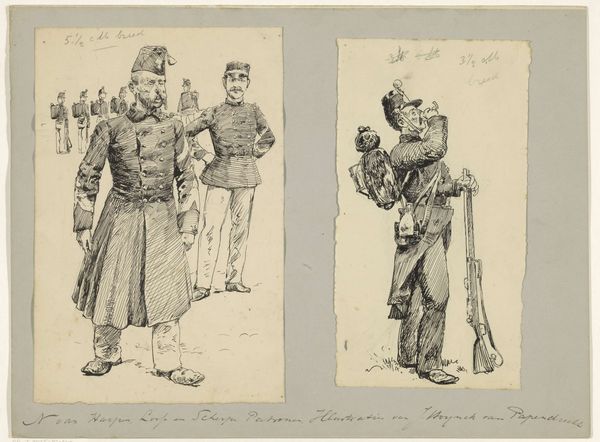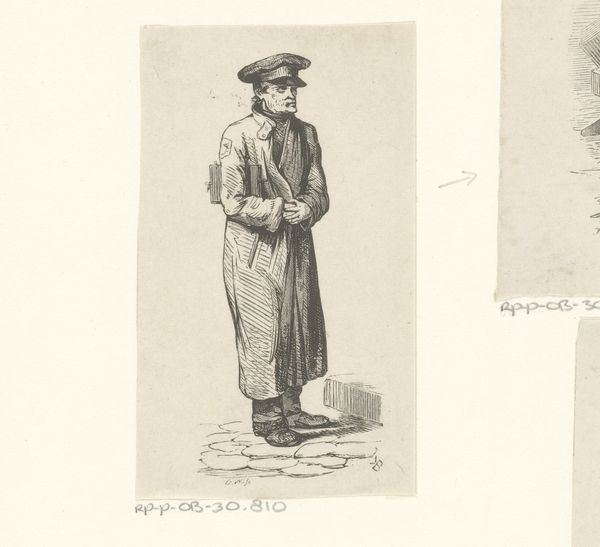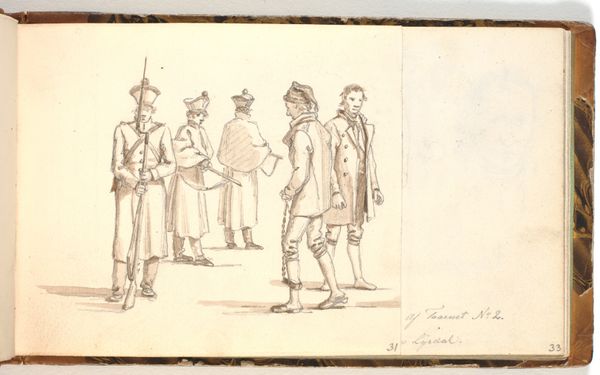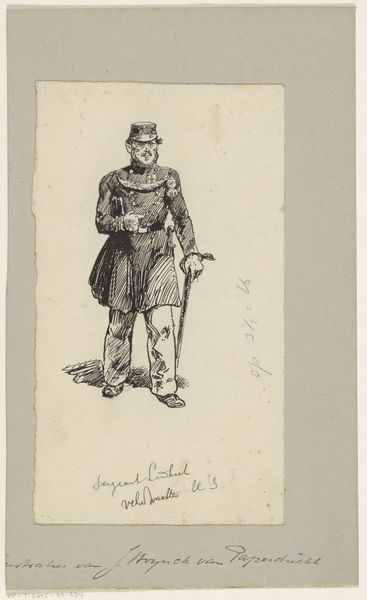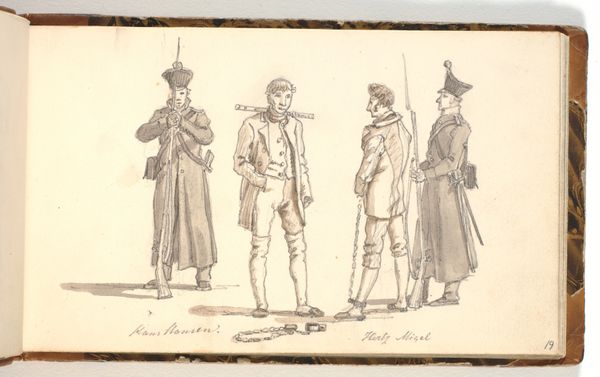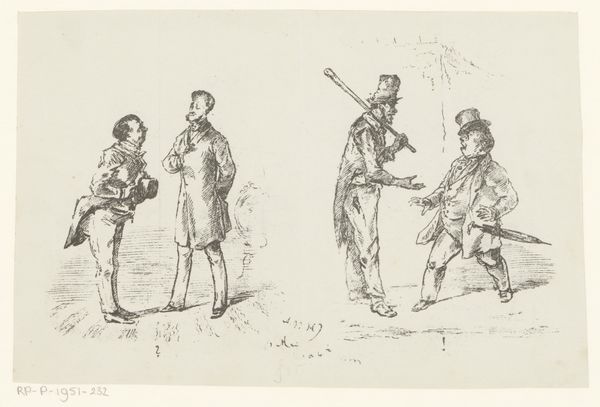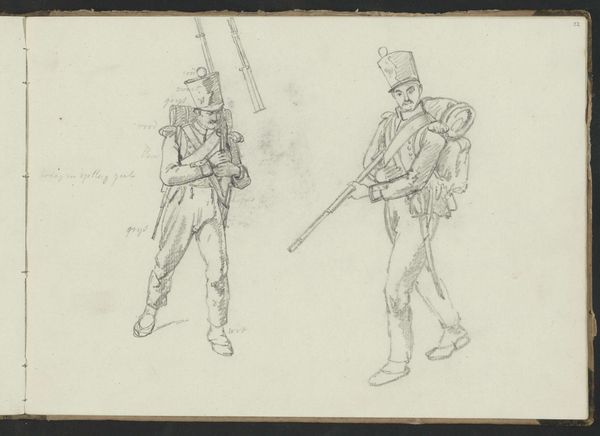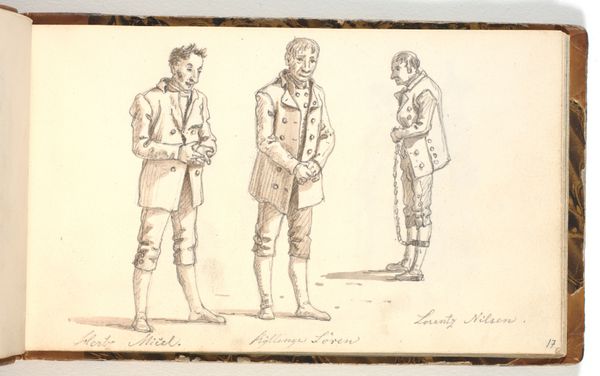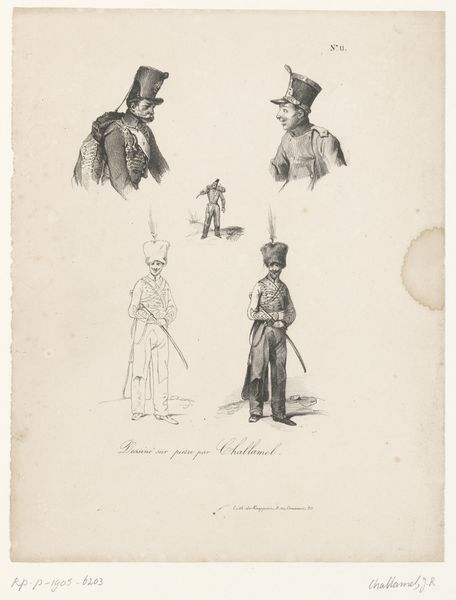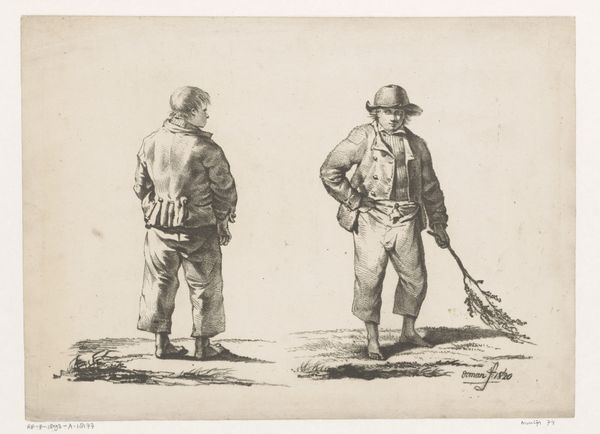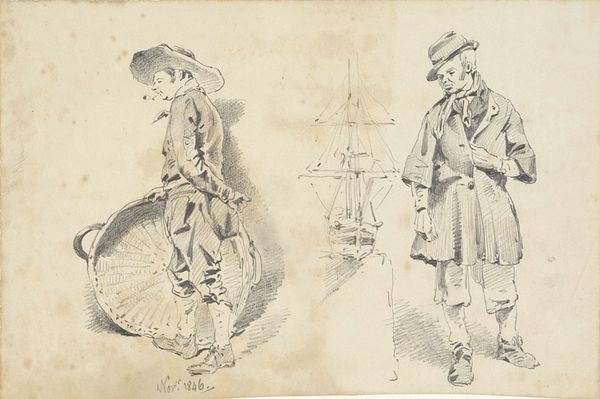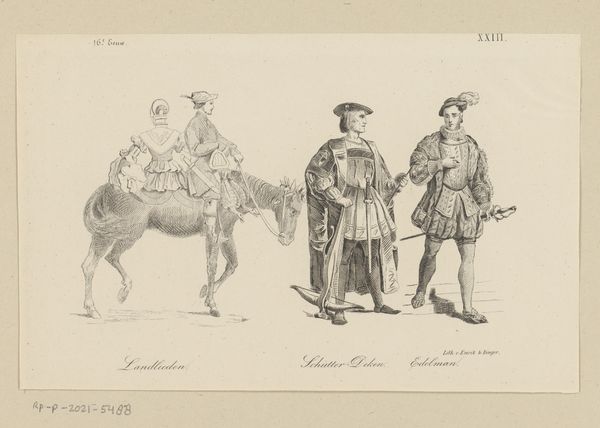
drawing, paper, ink
#
portrait
#
drawing
#
paper
#
historical fashion
#
ink
#
genre-painting
#
academic-art
Dimensions: height 203 mm, width 81 mm, height 241 mm, width 133 mm, height 203 mm, width 85 mm
Copyright: Rijks Museum: Open Domain
Curator: We’re looking at “Militairen met een trommel en blaasinstrumenten,” or “Soldiers with a Drum and Wind Instruments,” a drawing by Jan Hoynck van Papendrecht dating back to before 1889. It's ink on paper and displays three figures in military dress. My initial impression is one of detailed observation and restrained energy. Editor: It’s interesting how Papendrecht focuses on rendering the specific qualities of the uniforms— the fabric, the buttons, and how they fall on the body. Curator: Yes, but look closer, isn't the work primarily about documentation? The artist meticulously recorded these men in their work attire and weaponry for reasons we can only surmise. The work reminds us of military presence and perhaps alludes to how these individuals operated in a time of considerable conflict, given their formal uniforms. Editor: But there’s an artistry beyond simple record-keeping, isn't there? Observe how he plays with line weight. In the figure on the right, for instance, those densely packed lines create a stark contrast. It’s more than just representation; it's manipulation of form to create an impactful visual experience. The composition directs the eye. Curator: I would venture it's more that Papendrecht seems keen to preserve not only the uniforms' precise construction, as you've alluded, but what those uniforms stood for socially, which speaks to this historical fashion. Also the role of the musicians themselves, who perhaps represent celebration but also potentially represent mobilization for war. Editor: Do you feel the work suffers by being a preparatory drawing and nothing more, as far as we know? Are these figures less impactful as components than had they been scaled into a final piece? Curator: I'd argue its preparatory status is precisely where the drawing's value rests. We gain access to Papendrecht’s artistic process, revealing how these materials and practices are intertwined with military culture. Editor: True. The raw, unpolished quality does invite us to look past the figures and examine the craftsmanship. Curator: Precisely. In that sense, maybe there is more value to its "unfinishedness." Editor: An insightful suggestion, I’m almost persuaded.
Comments
No comments
Be the first to comment and join the conversation on the ultimate creative platform.
